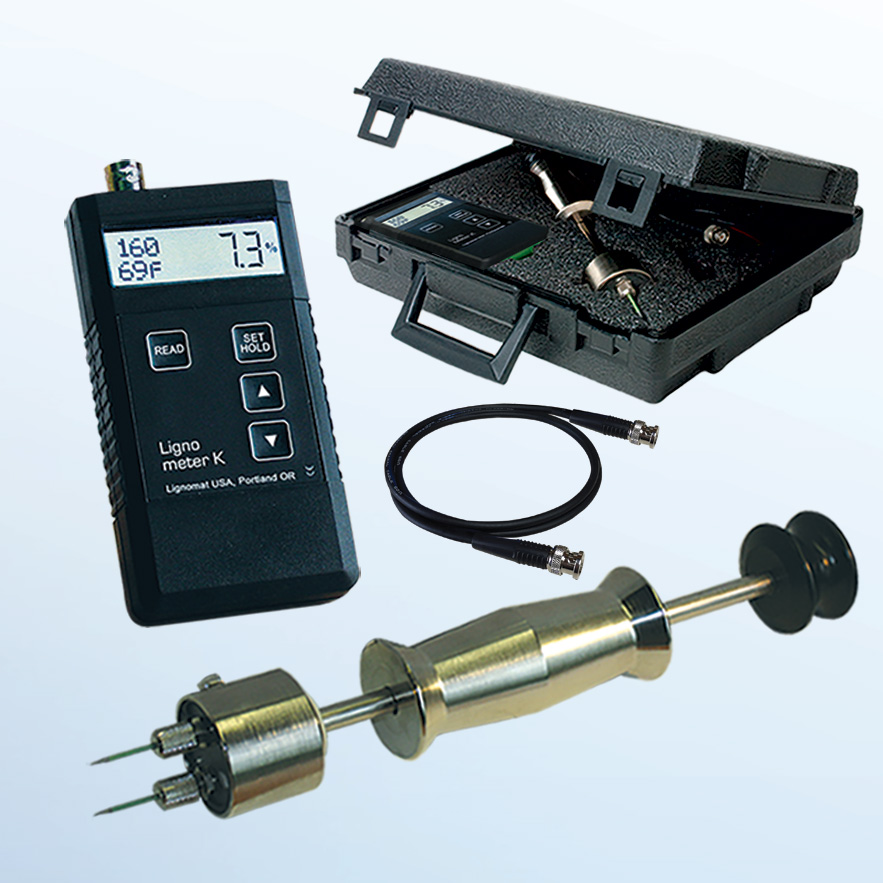Why Every Homeowner Needs a Moisture Meter: Key Benefits and Attributes
Why Every Homeowner Needs a Moisture Meter: Key Benefits and Attributes
Blog Article
Recognizing the Relevance of a Moisture Meter in Avoiding Mold and Water Damage in Your Home
In the realm of home maintenance, the presence of wetness can commonly be a quiet yet powerful adversary, capable of causing pervasive mold and mildew growth and perilous water damages if left uncontrolled. Recognizing the significance of a dampness meter in this fight is not just an alternative yet a calculated requirement.
Significance of Moisture Discovery
Effective wetness detection approaches are important for guarding properties and protecting against possible mold growth and water damages. Wetness can leak right into different structure products, bring about structural problems and carcinogen. By utilizing a wetness meter, property owners can proactively determine areas prone to excess dampness, enabling timely treatment and mitigation strategies.
Moisture meters give accurate readings of dampness levels in different products such as timber, concrete, and drywall. This information helps in pinpointing areas of issue, even in concealed or hard-to-reach areas. Early detection of dampness accumulation allows timely repairs or adjustments to avoid more damages.

How Moisture Meters Work
Moisture meters play a pivotal duty in the positive identification of excess wetness, helping in the avoidance of prospective mold growth and water damage by providing exact readings of dampness levels in different building materials. These gadgets function based on various principles, relying on their type. Moisture Meter. Pin-type moisture meters, as an example, have 2 pins that permeate the material to measure the electrical resistance between them. When moisture is present, it enhances the material's conductivity, bring about a lower resistance analysis. Pinless moisture meters, on the various other hand, use electromagnetic sensors to scan the material without creating damages. These sensing units produce electromagnetic signals that penetrate the product and measure the dielectric properties, suggesting dampness content. Some progressed wetness meters pin both incorporate and pinless technologies for thorough moisture detection. Recognizing exactly how moisture meters feature is necessary for exact and prompt dampness level assessments, making it possible for reliable preventative procedures versus mold and water damages.
Detecting Early Caution Indications
Upon first evaluation of a building, acknowledging subtle indicators of excess moisture ends up being important in the very early discovery of prospective mold and mildew growth and water damages. Some common early caution indicators include stuffy smells, water spots on wall surfaces or ceilings, peeling off paint or wallpaper, and warped or discolored surfaces. Musty odors usually suggest the visibility of mold and mildew or mold, even if no noticeable indications appear. Water stains can signal leakages or infiltration, while peeling off paint or wallpaper may be a result of dampness jeopardizing the adhesion of these materials to the surface. Distorted or tarnished surfaces, such as distorting floorboards or tarnished drywall, are clear signs of water damages. In addition, an increase in allergic reaction symptoms or respiratory system issues among residents might click this link recommend the presence of mold due to excess dampness. By without delay recognizing and dealing with these early caution indications, homeowners can mitigate the threat of considerable mold and mildew development and water damages in their buildings.
Avoiding Mold Development
Recognizing very early caution signs of excess moisture within a home not only enables punctual detection of prospective mold development and water damages however likewise acts as a positive measure in avoiding the spreading of mold and mildew. To successfully protect against mold and mildew development, it is important to deal with any kind of sources of dampness promptly. This can include fixing leaks in home windows, roofings, or pipelines, ensuring correct ventilation in moist areas like restrooms and kitchens, and utilizing dehumidifiers in high-humidity spaces. Regularly keeping the residential or commercial property and examining's pipes, roofing system, and you can try this out rain gutters can also assist in avoiding water intrusion that can lead to mold development.
Monitoring moisture degrees in areas prone to moisture, such as basements and creep areas, making use of a dampness meter can likewise assist in very early discovery of elevated moisture degrees and potential mold and mildew growth - Moisture Meter. By taking aggressive steps to protect against excess dampness and mold development, home owners can guard their home and indoor air quality.
Advantages of Regular Tracking
Routine surveillance of wetness levels in a property can play a critical duty in keeping a healthy interior environment and stopping possible mold and mildew and water damages. By consistently checking moisture degrees, property owners can discover any kind of issues immediately and take needed actions to stop mold and mildew development and water damages. Among the crucial benefits of normal surveillance is very early discovery. By identifying and dealing with high wetness levels early, home owners can step in prior to mold has the possibility to spread out and establish. This aggressive strategy can conserve both time and money over time by preventing extensive mold remediation and repair work costs.
In addition, regular monitoring enables home owners to track patterns and trends in wetness degrees over time. Ultimately, the consistent tracking of moisture levels equips homeowners to safeguard their home, protect their health, and maintain the honesty of their indoor environment.

Final Thought

By making use of a wetness meter, home owners can proactively determine areas vulnerable to excess wetness, enabling for prompt you can try this out intervention and mitigation strategies.

Monitoring wetness levels in locations prone to moisture, such as basements and crawl rooms, utilizing a wetness meter can additionally help in early detection of raised dampness degrees and potential mold growth. (Moisture Meter)
Report this page